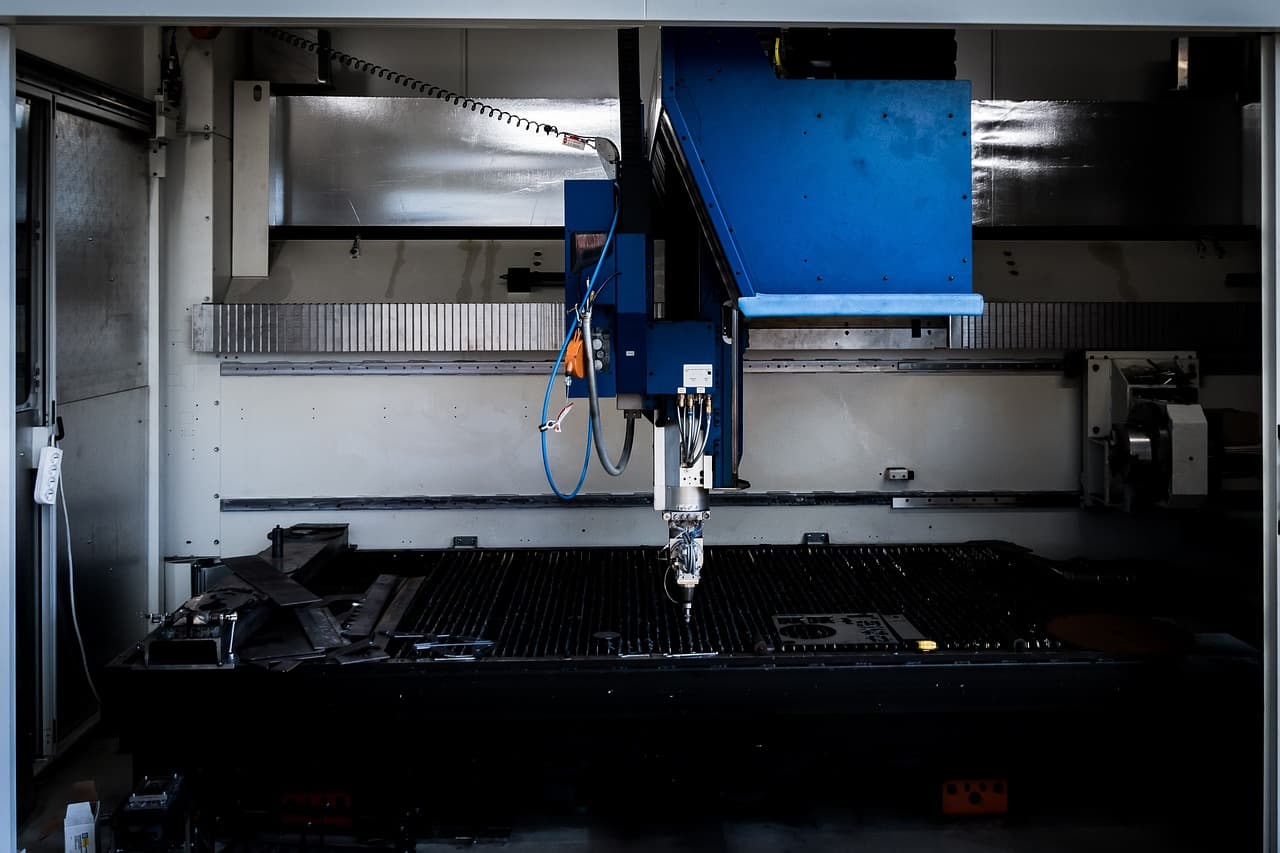


A laser cutting machine is an advanced tool that plays a significant role in various industries today. It uses laser beam technology capable of cutting a wide range of materials, particularly metal or steel-based materials. This laser cutting technology produces very neat and precise cuts, making it a popular choice in various industries, from manufacturing to creative sectors. To better understand how a laser cutting machine works, read this article to the end.
A laser cutting machine has several key components, which are as follows:
As the name suggests, the laser source is the component responsible for generating the laser beam. Its main function is to produce a powerful laser beam to cut materials.
The optical system consists of lenses and mirrors. The laser from the source passes through this system to be focused on a single point. The focused laser beam then cuts the material.
The work table holds the material that will be cut. It is usually equipped with a clamping system to ensure the material stays in place during cutting.
The cooling system, or water cooling system, is stored in a chiller and distributed to the laser source. Additionally, nitrogen or oxygen, and compressed air are released during the cutting process through the bottom part of the laser head or nozzle. Meanwhile, the ventilation system allows dust or smoke from the cut material to be safely removed.
The entire laser cutting machine is operated by a control system that manages all machine functions, from the laser and optics to the cutting process. This is controlled via a built-in computer and a dedicated remote.
The cutting process begins with the production of a highly focused and powerful laser beam from the laser source, which can be either a gas tube or optical fiber. This laser is the key element for cutting the material.
After the laser beam is emitted from the source, it is directed to the desired cutting area by passing through the optical system. The laser is focused into a very small, sharp beam to ensure a clean, precise cut.
The material to be cut is prepared on the work table. Once the laser is focused, sharp, and heated, the cutting process begins. The heat generated by the laser is what allows the metal or steel-based material to be cut.
To prevent overheating, the cooling system operates during the cutting process. The ventilation system ensures that dust or debris from the cut material does not interfere with the cutting operation.
This type of laser cutting machine uses CO2 (carbon dioxide) gas to generate the laser. CO2 laser beams are highly suitable and effective for cutting non-metal materials like acrylic, wood, or paper.
Fiber laser machines generate laser beams using optical fibers. This type of laser has a very high intensity, making it ideal for cutting or engraving metals such as steel, stainless steel, or aluminum.
YAG (Yttrium Aluminum Garnet) lasers use YAG crystals as the medium to generate the laser beam. This technology is considered older compared to CO2 or fiber lasers, but it is ideal for tasks requiring extremely high precision.
This brief explanation outlines the working process of a laser cutting machine, from laser generation, focusing, cutting, to cooling. All these processes are controlled by an operator via a computer.
One of the most widely used laser cutting machines in the industry is Bodor. PT Synergis Industrial Utama is a trusted distributor in Indonesia, providing Bodor laser cutting machines to meet your industrial needs.